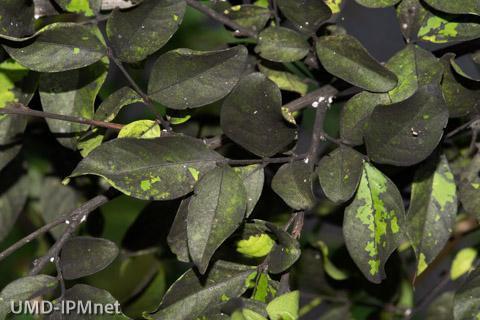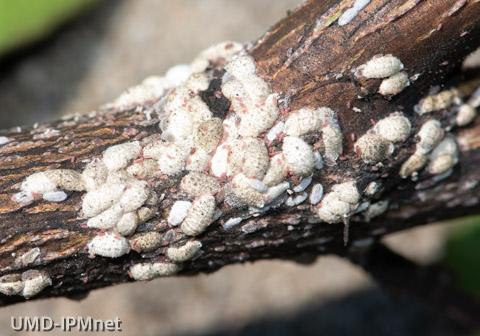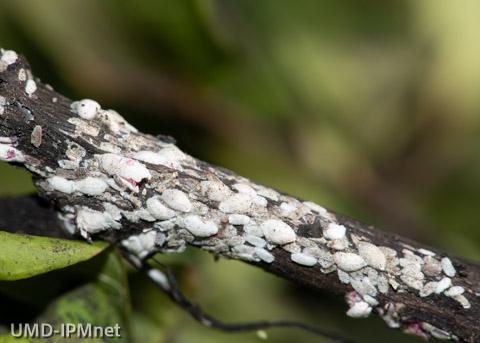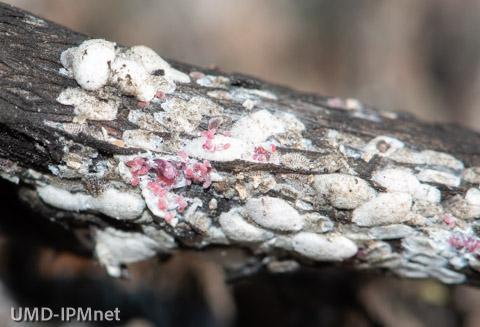Crapemyrtle Bark Scale First Confirmed in Maryland in 2020
For the last 25 years, crape myrtles have increased in Maryland nurseries and they are being used heavily in Maryland landscapes. Consequently, two pests, crapemyrtle aphid and crapemyrtle bark scale, have become serious pests of this plant. Crapemyrtle bark scale was first confirmed in Maryland by the Maryland Department of Agriculture in April 2020. The plant was growing in a landscape in Baltimore County. It was found in more Maryland landscapes throughout 2020, including in New Market (Frederick County) and Sykesville (Carroll County). The crape myrtles had copious amounts of honeydew and sooty mold coating the foliage.
This new exotic scale pest, Acanthococcos (=Eriococcus) lagerstroemiae Kuwana (Hemiptera: Sternorrhyncha: Eriococcidae), commonly referred to as the crapemyrtle bark scale (CMBS), is a big deal and it is a major threat to the commercial viability of nursery and landscape plantings of crape myrtles. This pest was first found in the USA in Texas. The first sightings of CMBS were reported in McKinney, Texas in 2004 (Gu et al. 2014), and the scale has since spread to at least 11 states in the U.S, from New Mexico to Virginia (EDDMapS 2019). As of 2020, its range has expanded to Maryland and the District of Columbia.



